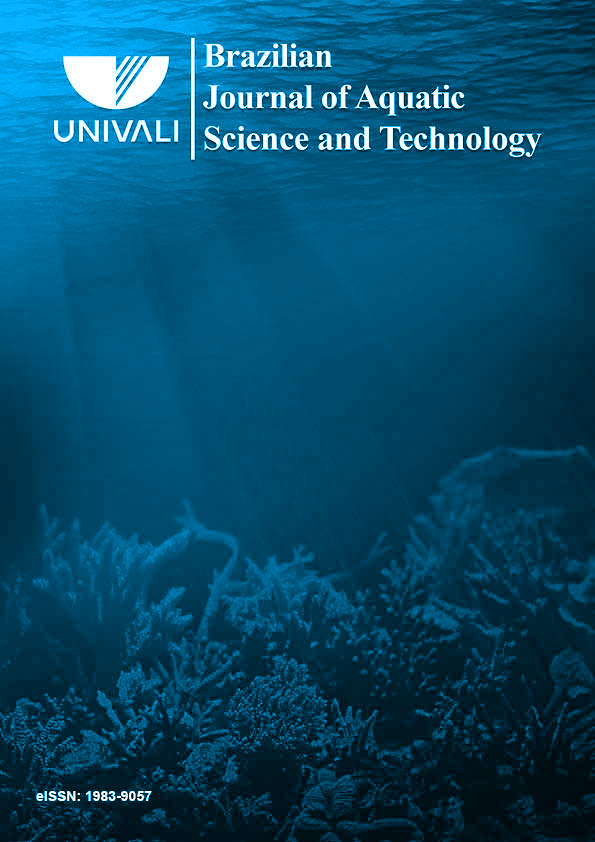Effect of pH and volume in the hatching of resistance cysts of the species Dendrocephalus brasiliensis Pesta, 1921 (Crustacea, Anostraca)
Published date: 24/09/2020

Branchoneta is an option as live food for aquaculture and it is necessary to develop more studies to get information that makes possible its culture on a large scale. Our aim was to establish a method that results in a higher percentage hatching of D. brasiliensis. We analyzed if the cyst density could cause any significant difference in hatching; for that test we use 2 different conditions: (I) 15 ml glass tube (T1, T2, and T3) with 25 (twenty-five) cysts/repetition; and (II)Â Erlenmeyer of 150 ml (T4, T5, and T6) with 25 cysts/repetition totaling 75 cysts/treatment, with triplicates to all treatments. We also tested 3 different pH conditions: acid (pH 3), neutral (pH~7/distilled water) and alkaline (pH 8), all in natural light and temperature. We conclude that there is no difference between the treatments, for none of the conditions tested. But other results have to be considered as Hatching Speed index and the Average Hatching Time with best results for the treatments T3, T1, and T2, respectively. The density of 0.6 ml/cyst (glass tube) resulted in faster hatching, which shows the necessity of further studies to analyze the speed of hatching under different conditions of density. The relative frequency showed that the hatchings peak occurs in the second day. We conclude that pH and density, in this study, not influenced the beginning of the hatching process.









